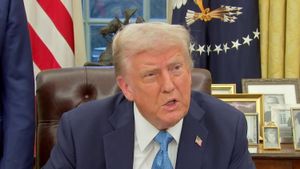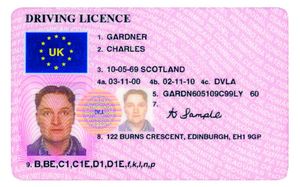President Donald Trump's controversial funding freeze and rapid executive actions have sparked intense legal scrutiny, raising questions about his adherence to constitutional norms. The situation began when the Trump administration issued a memo on January 28, 2025, pausing all federal grants and loans aimed at aligning such funds with presidential priorities. This memo was rescinded just two days later, but not without igniting legal challenges and public debate over the constitutional limits of presidential power.
According to a recent poll conducted by RMG Research, most Americans appear to support Trump’s intentions behind the funding pause. A significant 64% of respondents agreed with the notion of aligning federal spending with the will of the American people, with 52% also expressing support for halting all federal grants and loans for oversight. The poll, which surveyed 1,000 registered voters online, indicates a public desire for transparency and accountability, but it also reveals underlying divisions about executive authority.
Critics of Trump's actions have emerged from various sectors, including prominent legal scholars who argue his executive maneuvers constitute blatant violations of the law. Laurence Tribe, Harvard Law School professor, stated, "Without any doubt Donald Trump is the most lawless and scofflaw president we have ever seen..." He condemned the funding freeze as "a clear usurpation of... Congress’s exclusive power of the purse." Tribe's sentiments were echoed by Erwin Chemerinsky, dean of the University of California Berkeley School of Law, who remarked, "A stunning number of his executive actions clearly violate the constitution and federal law… " These criticisms highlight the growing apprehension among legal experts about the extent of Trump’s actions within his administration.
The memo's swift rescinding occurred following heightened criticism and multiple lawsuits from advocacy groups. The National Council of Nonprofits, alongside the left-leaning law firm Democracy Forward, filed legal challenges asserting Trump's actions contravened constitutional principles. This backlash came on the heels of more than 30,000 nonprofit organizations originating from the council, now at risk of losing federal support amid uncertainty surrounding earmarked funding.
The legal backlash escalated as federal judges began to act on the Trump administration's directive. Federal judges, including Loren AliKhan from Washington D.C. and John Coughenour from Seattle, quickly suspended the funding freeze, citing its unconstitutional nature. Coughenour characterized Trump's actions as "blatantly unconstitutional," demanding clarity on how such orders could come from the office of the presidency. This rapid response by the judiciary exemplifies the checks and balances intended to control presidential overreach.
To compound the controversy, Trump also faced backlash for terminating 18 inspectors general, independent officials tasked with auditing and investigating federal agencies for misuse of funds. Critics, including legal experts and lawmakers, conveyed serious concerns about these dismissals violating legal norms guiding such appointments. Kate Andrias, professor of constitutional and administrative law at Columbia University, called these firings "unprecedented and illegal, highlighting concerns about Trump's motives for consolidative power.", noting the National Labor Relations Act only allows removals for just cause. This aspect of Trump's executive actions has led to comparisons with other historically contentious presidencies, with scholars recalling Andrew Jackson’s violation of constitutional norms.
Public reactions remain mixed. While Trump's actions have garnered support from some segments of the population, they have simultaneously led to alarm over potential disruptions to programs like Medicaid, childcare services, and special education funding. Echoed by Matthew Vaeth, acting director of the Office of Management and Budget, the administration's rationale centered around stopping federal resources from advancing what they deemed "Marxist equity, transgenderism, and green new deal social engineering policies." These motivations have painted Trump’s administration as aggressive reformers, provoking differing viewpoints among citizens and commentators alike.
Despite the contentious nature of Trump's executive orders, polling suggests neither public consent nor outright disapproval is absolute. While support remains from 52% of respondents favoring Trump’s executive orders, there is still considerable apprehension on the horizon. The rapid reinstatement of federal support following judicial intervention and the mounting legislative scrutiny indicate particularly hyper-partisan waters down which Trump is now attempting to navigate.
Experts warn these actions could set precedents affecting the future of governance and the overall respect for the law. Trump’s lawlessness could create rifts within public trust, as Tribe pointed out, stating, "The sum of this is greater than the parts. Violations create rips, shredding the whole thing of governance we have assumed would be intact. If people normalize this lawbreaking, pushing back may prove even more difficult." This perspective raises alarms about the erosion of longstanding democratic integrity.
Moving forward, the interplay between public sentiment, judicial oversight, and executive power will form the bedrock of discussions around governance during Trump’s presidency. Historical analogies and constitutional critiques serve to remind citizens and officials alike of the delicate balance required to preserve democratic ideals against executive overreach and administrative chaos. The importance of upholding the rule of law remains ever-present as the nation watches closely.
Overall, Trump's recent funding freeze and methods of governance present complex questions about authority and legality, inviting scrutiny from legal scholars and representing divergent public opinions as the administration seeks to navigate the difficult path of campaign promises against institutional realities.



